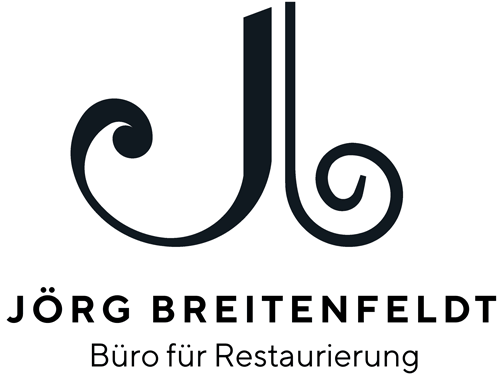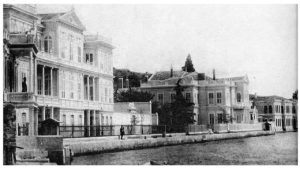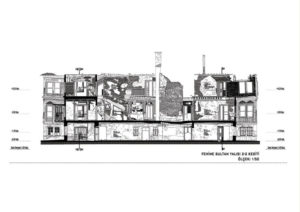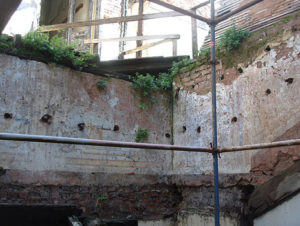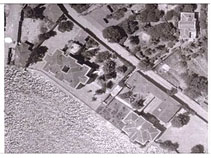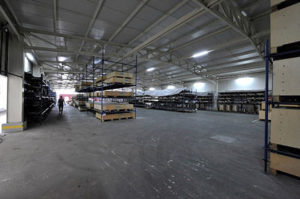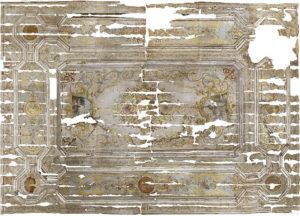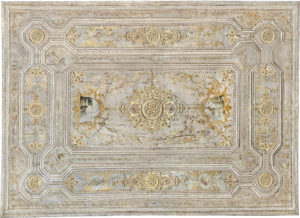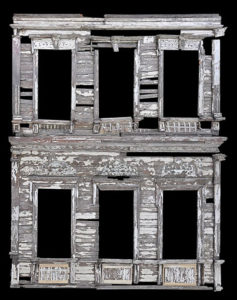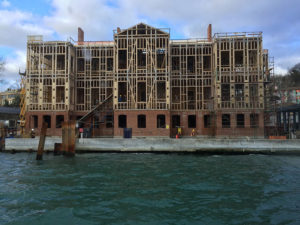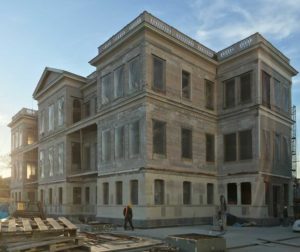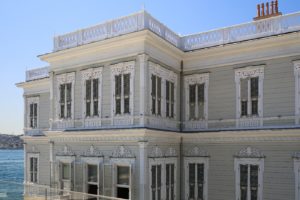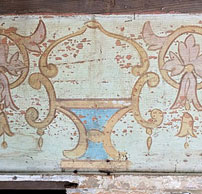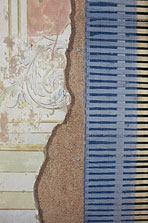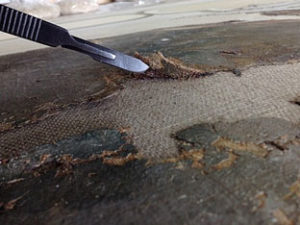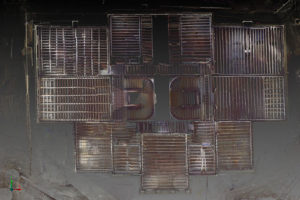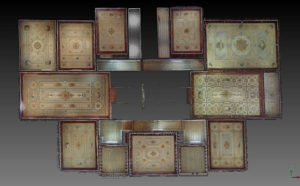Reconstruction of two Ottoman palaces on the Bosporus in Istanbul (Turkey)
Conservation-Restoration and Reconstruction of Two Ottoman Palaces on the Bosphorus in Istanbul (Türkiye)
On the European side of Istanbul, under the first Bosphorus Bridge connecting Europe and Asia, stand the last two of the originally about 80 wooden palaces from the 19th century. The palaces were given as a dowry to the daughters of Sultan Murat IV (Fehime and Hatice) by their uncle Sultan Abdülhamid II. They hold special significance for the city’s architecture, representing a blend of typical Ottoman wooden architecture with natural stone, influenced by Western architecture.
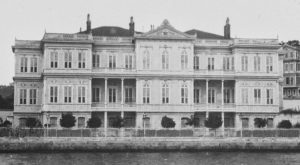 Following a sensitive restoration under the best monument preservation principles, the palace complex is being repurposed as a modern hotel, while preserving and honoring its historical origins and use. The modern infrastructure is arranged in the basement levels. The guest rooms are located in both palaces, with the room structure and layout largely preserved, maintaining the historical surfaces and dimensions.
Following a sensitive restoration under the best monument preservation principles, the palace complex is being repurposed as a modern hotel, while preserving and honoring its historical origins and use. The modern infrastructure is arranged in the basement levels. The guest rooms are located in both palaces, with the room structure and layout largely preserved, maintaining the historical surfaces and dimensions.
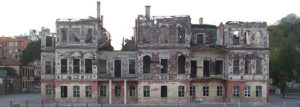 The Fehime Palace, after a severe fire in 2002, was largely left unprotected and exposed to the elements without a protective roof. To save the valuable palace from destruction, a concept was developed to dismantle the palace in its components (approx. 30,000 original building elements) and subsequently restore it. Since 2012, conservation work has been carried out in a depot workshop specially built for this project. The restoration concept was developed by RAO in cooperation with David Chipperfield Architects Berlin and implemented step by step.
The Fehime Palace, after a severe fire in 2002, was largely left unprotected and exposed to the elements without a protective roof. To save the valuable palace from destruction, a concept was developed to dismantle the palace in its components (approx. 30,000 original building elements) and subsequently restore it. Since 2012, conservation work has been carried out in a depot workshop specially built for this project. The restoration concept was developed by RAO in cooperation with David Chipperfield Architects Berlin and implemented step by step.
 The Hatice Palace was extensively altered and insensitively renovated several times in earlier years. Many of the original wall surfaces were completely lost, except for a few exceptions. However, the elaborately painted and stucco-decorated canvas ceilings, ceiling cornices, and historic wooden ceilings have been almost completely preserved. The restoration is carried out only partly in the workshop, with special strengthening and securing measures implemented on the structural framework.
The Hatice Palace was extensively altered and insensitively renovated several times in earlier years. Many of the original wall surfaces were completely lost, except for a few exceptions. However, the elaborately painted and stucco-decorated canvas ceilings, ceiling cornices, and historic wooden ceilings have been almost completely preserved. The restoration is carried out only partly in the workshop, with special strengthening and securing measures implemented on the structural framework.
From 2010 to 2019, Mr. Breitenfeldt and his team were active in Istanbul as the leading project coordinator, chief restorer, and supervisor for the restoration and reconstruction of the two palaces in collaboration with David Chipperfield Architects Berlin. As part of these services, restorers and craftsmen were trained and coordinated, and sample creations and tests were monitored. Specifically for the dismantling of the Fehime Palace, under the leadership and coordination of Jörg Breitenfeldt, restoration workshops and depots with a total size of 5,000 m² for all material groups were planned, set up, and operated until the reconstruction.
Client
THY DO & CO Ikram Hizmetleri A.Ş.
Realization
May 2010 – October 2019
Team
Jörg Breitenfeldt and Team (until August 2018 as managing partner of Restaurierung am Oberbaum GmbH and thereafter Jörg Breitenfeldt | Office for Restoration): Conservation and restoration concept, coordination of conservation-restoration and reconstruction, quality control, sample creation, and training. Project leader and director of restoration-conservation
DCA Berlin (David Chipperfield Architects Berlin): Thomas Benk and Martin Reichert: Artistic concept of restoration
PLANNING PARTICIPANTS: Ahmet Selbesoglu, Architect MSc: Monument preservation control on behalf of the Turkish Ministry of Culture and Tourism, Arol Sevimlisoy, Sevimli Mimarlik, (Istanbul): Project Architect
conference lecture
ICOMOS International Scientific Conference – Conservation Ethics Today: Are our Conservation-Restoration theories and Practice ready for the 21st Century? Florence (Italy), March 1-3, 2018 | Auditorium al Duomo (via de’ Cerretani 54/r). Jörg Breitenfeldt. title: Professional interdisciplinary position and role of academic conservator-restorers in theory and practice. subtitle: Methodical symbiosis and transdisciplinary cooperation using the example of the rebuilding and conservation of two Ottoman palaces in Istanbul.
